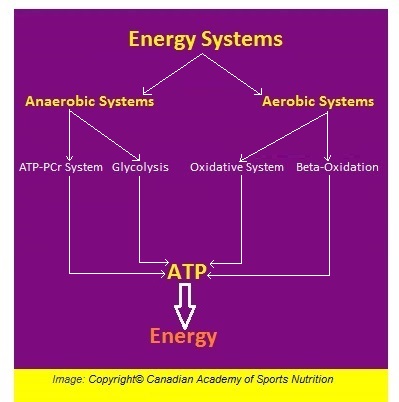The human body needs a continuous energy supply to function optimally, and any physical activity demands more energy production. The energy stored in chemical bonds of carbohydrates, proteins, and fats is released as ATP (adenosine triphosphate) through complicated yet precise cascade chemical reactions.
ATP is an energy carrier in the body that contains energy within its phosphate bonds. After breaking down, it releases energy required for the body to be utilized by every single cells. The final outcome of the energy systems in the body is to produce ATP.
The energy systems in human are anaerobic and aerobic systems. Anaerobic systems include ATP – PCr System and Glycolysis, and they do not need oxygen to produce ATP. Aerobic systems include Oxidative System (Krebs Cycle) and Beta – Oxidation, and they do need oxygen to generate ATP.


